The terms 'mother' and 'breastfeeding' are used throughout our documents; we recognize and respect that individuals and families may use other preferred terminology.
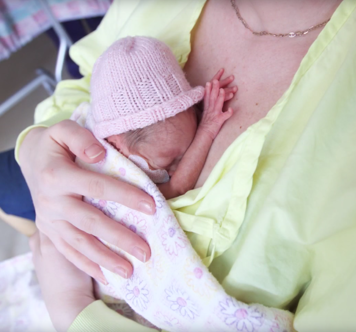
What is kangaroo care?
Having skin-to-skin contact with your baby, also known as kangaroo care, provides many health benefits for both you and your baby. During kangaroo care, your baby will wear only a diaper, and they will be placed on your bare chest. Any parent can provide kangaroo care. If your baby’s health condition prevents you from holding them against your chest, there are modified forms of kangaroo care that you can do.
How to provide kangaroo care

Before you begin kangaroo care with your baby, it is important you are prepared and your baby is ready. This will allow you to be skin-to-skin with your baby for as long as possible without any interruptions. Each session of kangaroo care should last for a minimum of 60 minutes but can last for several hours.
Supplies you may need for kangaroo care include a comfortable chair, a pillow and a blanket, and a wrap or clothes to wrap yourself and your baby in. If you need help gathering these supplies, your nurse will be able to help you.
You and your baby’s nurse can help to prepare your baby for kangaroo care by providing any other necessary care to them beforehand, such as changing their diaper.
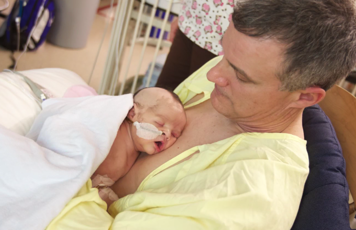
Before beginning kangaroo care, you should use the washroom, eat and drink, and wash your hands. Make sure you are wearing a top that opens in the front, or a nurse can provide you with a gown so that there is as much skin-to-skin contact between you and your baby as possible. If you are expressing breast milk, it is ideal to pump before and right after kangaroo care.
Once you are seated comfortably, your nurse will help transfer your baby to you and teach you the best way to position and hold them. You may also be taught how to pick up your baby by yourself and transition to a seated position. During kangaroo care, your baby will be wearing only a diaper and, sometimes, a hat. They will be placed in an upright position on your bare chest (you may wear a bra if that is more comfortable for you). Use a blanket, wrap or clothes to keep you and your baby warm.
The power of touch
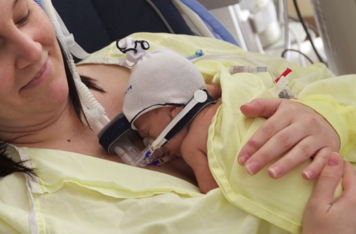
Kangaroo care offers many benefits for parents and babies.
For parents, kangaroo care can:
- decrease their stress
- increase bonding with their baby
- increase confidence in caring for their baby
- help parents feel they are part of the health-care team
- decrease risk of postpartum depression
Benefits specific to lactation include:
- increased milk supply
- easier transition to breastfeeding
Benefits for your baby include:
- helping to regulate their breathing, heart rate and temperature
- preparing your baby for breastfeeding
- decreasing pain during painful procedures
- helping with sleep and brain development
- decreasing stress and crying
Modified kangaroo care
There are other ways you can have skin-to-skin contact with your baby if your baby's health condition does not allow you to hold them. These include:
- finger holding
- hand hugging
- encircling
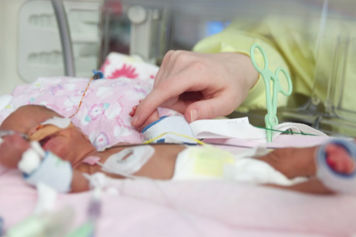
The parent places one finger in their baby’s hand for them to grasp.
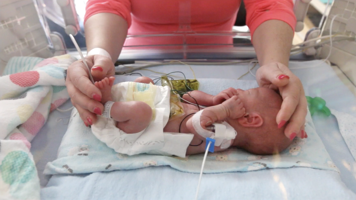
The parent places both hands on their baby, with one hand cupping the feet and the other hand cupping the head.

The parent rests both hands gently on their baby’s torso.
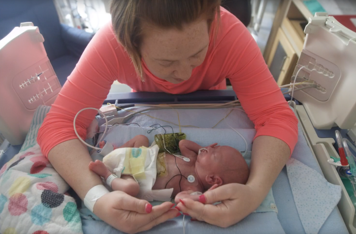
The parent wraps both of their arms around their baby’s body in the crib.
Resources

For a video on how to perform kangaroo care, please see SickKids: Kangaroo care and the hospitalized baby.
For more videos from SickKids on kangaroo care, please visit:
http://www.sickkids.ca/breastfeeding-program/videos/index.html.
For further resources on kangaroo care and breastfeeding, please visit:
www.sickkids.ca/breastfeeding-program/index.html.